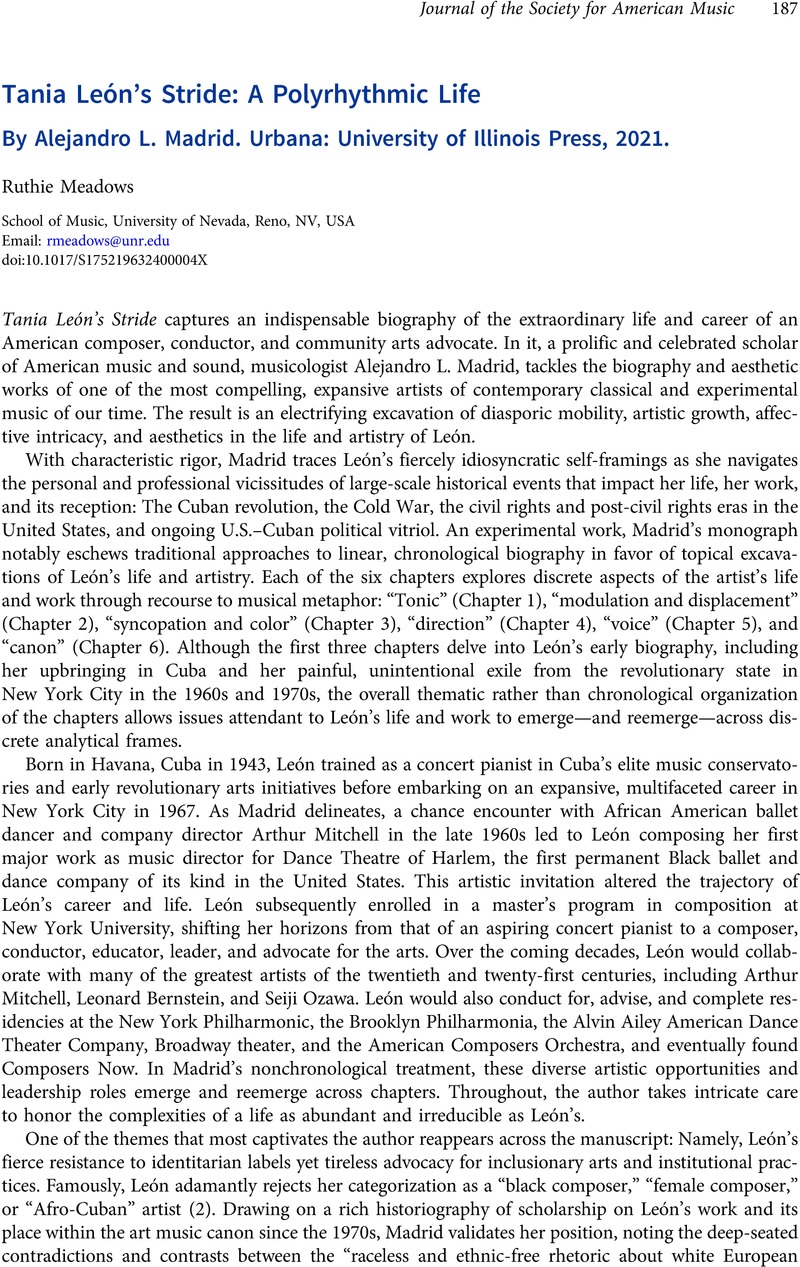No CrossRef data available.
Article contents
Tania León's Stride: A Polyrhythmic Life By Alejandro L. Madrid. Urbana: University of Illinois Press, 2021.
Review products
Published online by Cambridge University Press: 03 June 2024
Abstract

- Type
- Book Review
- Information
- Copyright
- Copyright © The Author(s), 2024. Published by Cambridge University Press on behalf of the Society for American Music
References
1 Gidal, Marc, “Contemporary ‘Latin American’ Composers of Art Music in the United States: Cosmopolitans Navigating Multiculturalism and Universalism.” Latin American Music Review 31, no. 1 (2010): 40–78CrossRefGoogle Scholar; Iturralde, Iraida, “In Search of the Palm Tree: An Afternoon with Tania León,” in Cuba: Idea of a Nation Displaced, ed. O'Reilly, Andrea Herrera (Albany, NY: State University of New York Press, 2007), 223–34Google Scholar; Walker-Hills, Helen, From Spirituals to Symphonies: African-American Women Composers and Their Music (Urbana and Chicago, IL: University of Illinois Press, 2007)Google Scholar.
2 See Díaz, Juan Diego, Africanness in Action: Essentialism and Musical Imaginations of Africa in Brazil (Oxford: Oxford University Press, 2021)CrossRefGoogle Scholar; Gilroy, Paul, Against Race: Imagining Political Culture beyond the Color Line (Cambridge, MA: Harvard University Press, 2000)Google Scholar; and Gilroy, Paul, The Black Atlantic: Modernity and Double Consciousness (Cambridge, MA: Harvard University Press, 1993)Google Scholar.
3 See Madrid, Alejandro L., “Listening from ‘The Other Side,’” in Decentering the Nation: Music, Mexicanidad, and Globalization, ed. Ramos-Kittrell, Jesús (Lanham, MD: Lexington Books, 2020), 211–30Google Scholar; Madrid, Alejandro L. and Moore, Robin D., Danzón: Circum-Caribbean Dialogues in Music and Dance (Oxford: Oxford University Press, 2013)Google Scholar.
4 See Bodenheimer, Rebecca M., Geographies of Cubanidad: Place, Race, and Musical Performance in Contemporary Cuba (Jackson, MS: University Press of Mississippi, 2015)CrossRefGoogle Scholar.
5 Díaz, Africanness in Action, 2021.


